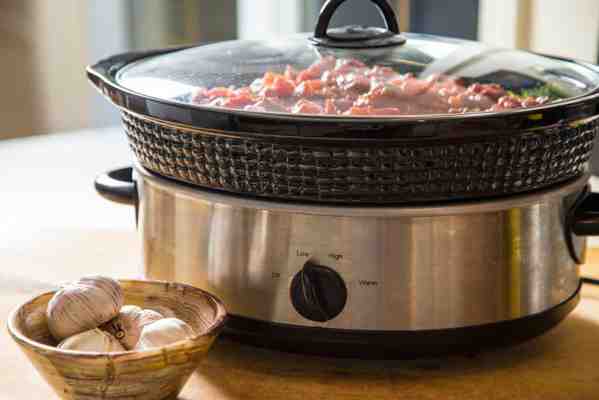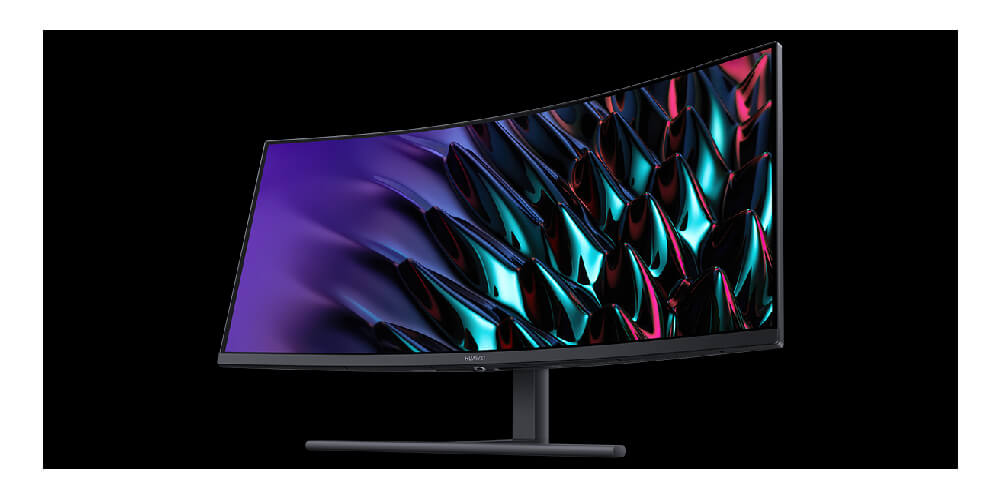Here's the ultimate list of all the different types of cookers you can buy for your kitchen to create all kinds of dishes imaginable. If you're interested in learning your options for small appliances that prepare food, this is the list for you.

Last updated on September 7th, 2021 at 08:37 pm
What’s the ideal number of small cooking appliances to have in your kitchen?
Why, it’s , where is the number of these little gems that you already own.
So if you don’t have any, it’s time to get started. And if your countertops already sparkle and hum with an assortment of useful cookery devices, you can no doubt find it in your heart to make room for one more. From the commonplace to the specialized, here are the candidates vying to be the latest +1 in your cooking space.
Used to be everyone had one of these, and they’re still mighty practical. Toast, Eggos and Poptarts just aren’t the same in a microwave. I recall a story from the cold war era: an American manufacturer displayed some Western conveniences, including toasters, at an exhibit in the USSR. The Russians couldn’t understand what the device was for. “Doesn’t your bread come already cooked?” they asked.
When the microwave came along, some thought toaster ovens would sadly slink away like Puff the Magic Dragon without Jackie Paper. That would be a shame, because there are tasks they do much better than the nuke boxes. There are folks who still celebrate the toaster oven, such as AmySaysCook, who reminds us it can do pretty much everything an oven can do: bake breads, roast chicken, bake potatoes (without the caved-in results microwaves sometimes render), crisp up nachos and cheese. For leftovers that are better with some crunch – think French fries, for example – the toaster oven is the way to go.
When I was a kid I used to toast bread on one side, flip it over and lade the soft side with butter, cinnamon and sugar, then broil it to make a firm foundation for the gooiest, most degenerate cinnamon toast imaginable. Let’s see a microwave do that!
The countertop oven is the toaster oven’s younger and larger sibling, and a big reason people are rediscovering the toaster/countertop oven. The dividing line between the two is not strictly defined. Hamilton-Beach takes a shot at explaining the difference for us; countertop ovens are generally larger, have more bells and whistles, and some of them offer convection cooking. A convection oven contains a fan that circulates the heated air and maintains a more consistent temperature throughout the interior. Another oven available in countertop size is the steam oven. It has a water canister (you have to keep it full), and that water gets heated to steam the food. Some folk claim this retains flavor and nutrients, especially with vegetables. Can’t decide? Some countertops feature both convection and steam.
If you ever get bored with your full-sized oven, or it breaks and you don’t feel like fixing it, a countertop oven can step in and become your favorite kitchen do-it-all. It’s almost as much fun as that Easy-Bake oven you once played with.
According to Live Science, the microwave principle was accidentally discovered by a Raytheon scientist who was experimenting with a magnetron and found a chocolate bar in his pocket had melted. The first restaurant microwave oven, delivered in 1947, was over five feet tall and weighed 750 pounds. Through the sixties they were a novelty, large and bulky and festooned with warning labels. It wasn’t until the seventies that the size and the cost got low enough for them to take off in popularity. Today about the only homes that don’t have them are ones where the old one broke and they haven’t replaced it yet.
Microwaves make leftover French fries droopy, can’t produce toast and are responsible for that bizarre-smelling popcorn in the paper bags, but they’re so wonderfully convenient, and what they do, they do in a hurry. They’re the best thing that ever happened to leftovers, and most of us wouldn’t try to get along without one.
In its simplest form this is an open-top grill with one or more electric heating elements and a grate on top. When I lived in a northern climate I used one of these to cook burgers and steaks rather than wade through the snow to get to the propane grill on the deck.
Electric grills began their skyrocket journey in popularity when George Foreman decided to stop pushing other boxers around and start pushing a new cooking product on TV. Now these indoor steakmakers are available in a dizzying variety of configurations. Quite a few have the original Foreman set-up where the top presses down directly on the meat, and others (including some of the Foremans) feature a top set above the grilling surface that you can open and close same as an outdoor grill lid.
These things typically cook with little or no smoke and are tilted so grease drains away from the food. Some home chefs are so enamored of them that they stay indoors and cook with electricity even when the weather suggests they should go out into the sunshine and cook with propane.
is a variation on the electric grill and may not even merit its own category. Also called a panini press, it’s a more recent addition only because most people didn’t know what a panini was back when George came out with his first product. You can make these corduroy sandwiches in a variety of cooking devices, but if you invite friends over for paninis, you really ought to use a cooker that has “panini” in its name. By the way, they handle non-sandwich grilling chores as well.
We don’t own an electric skillet but my mom had one growing up and used it all the time. They’re great because they are usually large with high sides so you can create large batches of food such as sauces.
The electric skillet is a plug-in cooking and frying pan with high sides. A stove-top skillet interposes a layer between the heat and the cooking surface, but with these skillets the food cooks directly on the heating surface. They generally hold more that a regular skillet, have a temperature control, and provides more precise heat over the entire surface area.
When you plug in your electric griddle and rustle up a batch of bacon, eggs and pancakes, you’re using one of the oldest cooking techniques known to the human race. No, your average caveman (or cavewoman) didn’t have an outlet under the etchings of the woolly mammoth, but they did have an open fire and a flat rock.
Griddles have been around for a while in the indoor kitchen as well, but as any one who’s ever laid a griddle pan across a couple burners knows, it can be a challenge keeping a consistent temperature over every square inch on the surface. The plug-in version solves that problem. For pancakes (and, if you have a yen for painstaking and meticulous work, crepes) there’s nothing better. You don’t have to maneuver your spatula around the side of a pan; just slide it under and flip. The pancake, that is.
These do only one thing, right? Well, maybe some people use them only for waffles, once every six month when one spouse calls to the other, “Honey, where did we put the waffle iron?” Actually, though, there are quite a few reasons to dig your waffle maker out of the closet, or to keep it close at hand in the first place. Quesadillas you might have thought of, but pizza? Cook the pizza dough as you would a waffle, then pile on the ingredients and keep the lid almost closed to finish it off. Brownies, cinnamon rolls and cornbread are all possibilities, as well as the bacon to go with those waffles.
The original slow cooker, the Crock Pot, was invented in 1940 for observant Jews who wanted to enjoy a Sabbath meal without cooking on the Sabbath. But its sales didn’t take off until the seventies when women began to enter the workforce in large numbers. Along with the microwave, it’s done more than any other device to change way folks prepare food. Crock Pot cookbooks have consistently been best sellers, although a lot of us use the same time-tested recipes over and over again. Nothing elevates a cheap cut of beef like six hours in the slow cooker and half a bottle of barbecue sauce. There’s no reward after a day of skiing as good as the roast, potatoes and carrots that have been simmering while you were on the slopes.
These still can be pretty simple devices. About the only thing that’s changed in the last half-century is that many of them are now programmable. I still use one where the only programming choices are “high,” “medium” and “low,” and the old standby never fails me.
If you don’t have time to wait for a slow cooker, you can always use a pressure cooker. These were invented in France back in the seventeenth century, and they raise the boiling point of water to cook faster. For a long time they were popular at high altitudes where pressure is low and boiling water just isn’t hot enough naturally. Now they’re available for everyone’s kitchen. These “fast cookers” take care of rice in minutes, hard beans in under an hour, and are great for tenderizing tough cuts of meat.
Steaming is another form of cooking that’s been around about as long as people have been eating. Archaeologists have dug up steam pits that are 10,000 years old. Today you can accomplish the same thing by plugging an appliance into a socket. Some argue that this is the healthiest way to cook because you don’t add any fat and there aren’t any liquids touching your food to leech the nutrients away. Most electric steamers have multiple layers so you can cook an entire meal with meat on one tier and vegetables on the other.
Sure, you can cook rice in a pot on the stovetop, and if you’re careful and work at it you’ll get pretty good results. But if you’re chopping, dicing and minding a couple other pots and pans at the same time, you might all of a sudden notice that the rice water is boiling over and wonder how long it’s been since you stirred it. A rice cooker can not only free up a burner but also ensure that as least one part of your meal will be exactly right. Many have timers so you can set up the rice early in the day and have a perfect fluffy result for dinner.
Here’s the cooker to rule them all. Wildly popular for good reason. It cooks almost anything and replaces multiple small appliances.
If your slow cooker, pressure cooker, steamer and rice cooker start to misbehave, you can threaten them. Tell them they’re all going to be fired and replaced with a super-appliance that can handle all their jobs. Instant Pot was the first of these in 2010 but now there are several manufacturers bringing their offerings to the marketplace. These can prepare dinner as quickly or as slowly as you’d like. The biggest drawback: there are so many things the programmable controls can do that you may never figure them all out. As if four kinds of cooking aren’t enough, some of them make yogurt as a sideline.
A lot of kitchen appliances make food that’s so healthy and virtuous you’ll suspect you’re missing out on something. The deep fryer doesn’t have that problem. Wings, donuts, fries: if it’s greasy and delicious the deep fryer can do it. It’s particularly adept at “delicacies” that go well with beer and football. Lower that basket full of crunchable goodies and stand clear from the splattering oil!
If you’re buying so much oil for your deep fryer that cooking oil becomes a line item in the family budget, maybe you should cook a few items in an air fryer. This device uses a fraction of the oil because it circulates heated air with minuscule oil droplets, and you still get browned chicken and crispy fries. If you’ve a mind to you can even bake cookies and brownies in one of these.
Back in the olden days we covered the bottom of a pot with oil, waited patiently until it got hot, dumped in the popcorn, and waited even longer for the “pop-pop-pop” to begin. When it was done, we lifted the lid, and immediately one last kernel popped, flew out and hit us in the eye. Nowadays lots of people just stick those bags in the microwave, but they smell weird, and unless you paste your face to the microwave window you don’t get to see them in action. If you like to eat a lot of popcorn there’s nothing like an electric popper. They look cool (some are popcorn wagon red) and you can listen and watch while they do their task. Your microwave doesn’t have to be left out; use it to melt the butter.
Maybe you thought these were only allowed in dorm rooms. Certainly they work as travel companions and in places where cooking is disallowed and done secretly, but hot plates have a place in the kitchen as well. If you’re preparing a big meal and you’re short a burner or two these can pinch hit. Newer ones get hot in a hurry. A caveat: some units are safe for only certain kinds of cookware.
“Sous vide” is French for “under vacuum,” and it involves sealing food in a bag and immersing it in water. The machine is an immersion pot with a coil that keeps the water at a precise temperature. Meat takes much longer to cook but the heating process is so tightly controlled that it never get overdone. You can also buy an immersion circulator that works with a pot you already own.
I remember my parents bought a bread maker. The results were great but the pre-mix bread mixes weren’t cheap. Turned out my brother had a penchant for using it so he took it home and uses it weekly. He loves the thing and makes bread all the time.
There’s nothing like fresh bread, and if you make your own it’s fresher and better. Before these machines came along, breadmaking was an all-day task with a lot of steps. Some of these deliver the loaves in as little as an hour. Make white, wheat, bread with nuts and bread without gluten, and some will handle cake, pizza dough and pasta.
A few decades ago most Americans didn’t know was a quesadilla was, and now they’re on every appetizer menu, Mexican restaurant or not. Make them at home with cheese and whatever other ingredients tickle your fancy.
Fondue was all the rage way back in the 1950’s and 1960’s. It never entirely disappeared from the culinary scene, and today the pots and kits are available in electric models as well as with a more traditional fuel source such as Sterno.
Here’s something for the home chef who can’t resist one last gadget. This inexpensive and highly specialized machine boils, steams or poaches eggs with little mess or clean-up. It takes a bit longer but does the timing task for you.
Related: 40 Different Types of Appliances | Types of Bakeware | Types of Pot Racks | Kitchen with Hanging Pot Racks












